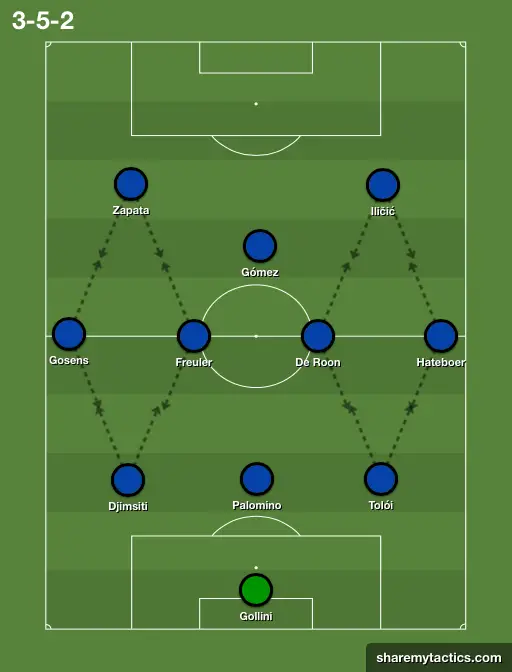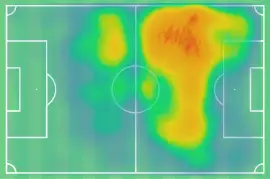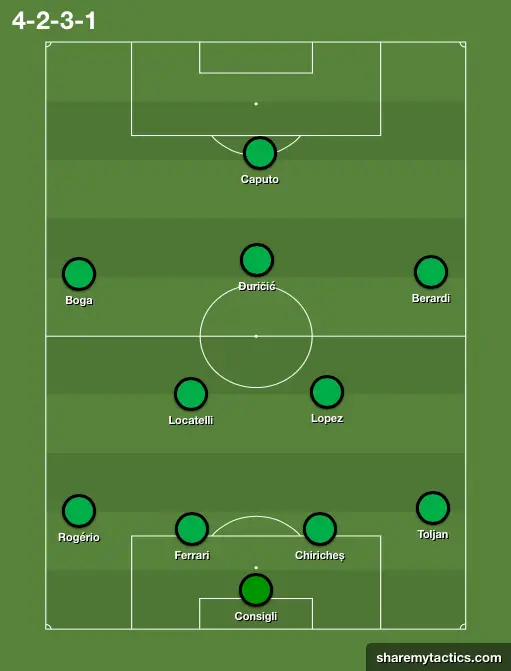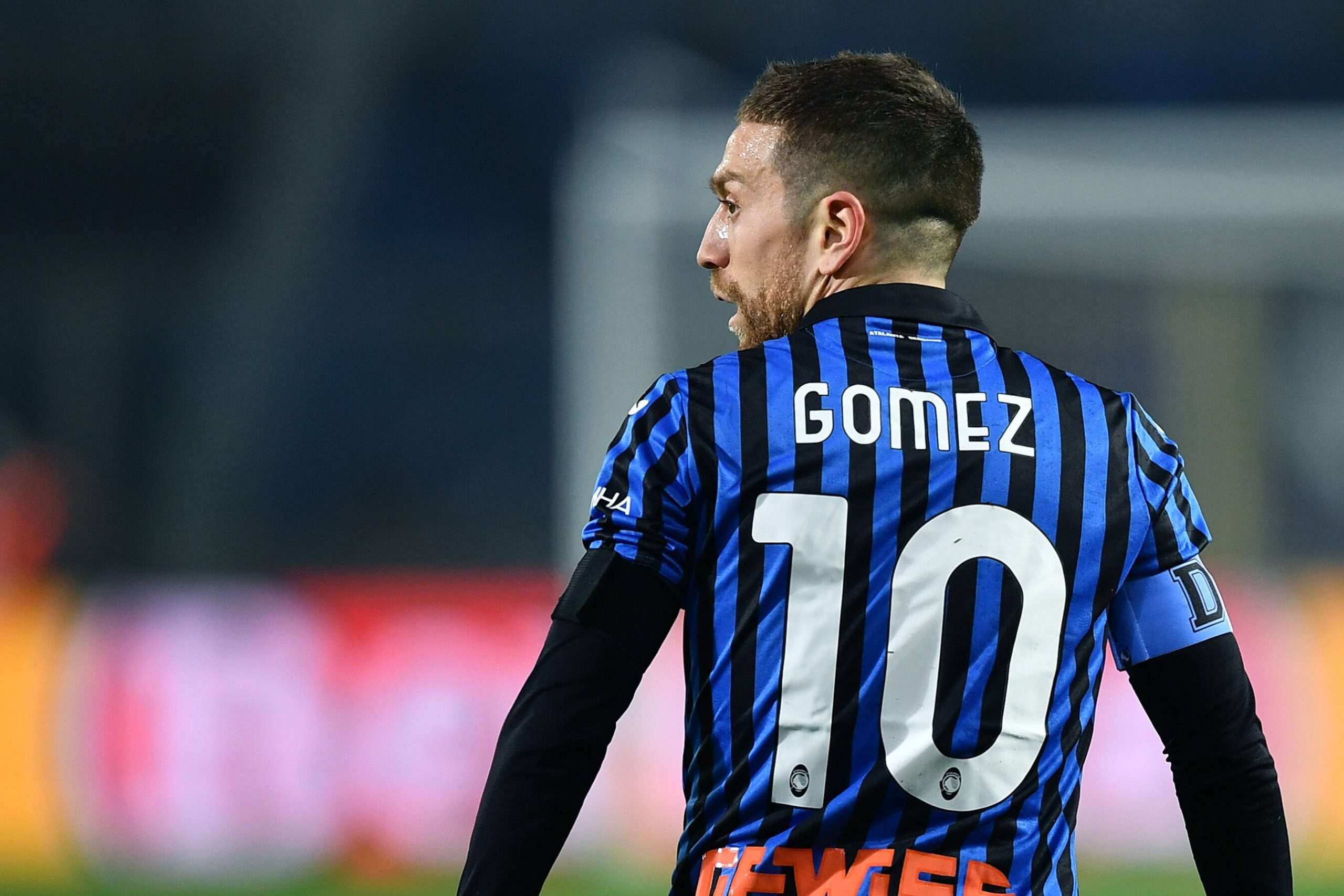Is the traditional #10 a dying breed?
Throughout every footballing generation, there are a handful of players that manage to write themselves into the record books. However, whilst every one of these players possess a uniqueness that separates them from their competition, a strong contingent of these have a particular thing in common. The number 10.
Without fail, in each generation other exceptional players add themselves to the elite company of those who once donned the two digits. Lionel Messi, Zinedine Zidane, Pelé, Ronaldinho, Johan Cruyff and, of course, the late, great Diego Maradona are just a selection of these revered footballers.
However, as the game continues to evolve, so does the role of a number 10. Therefore, this poses the unenviable question as to whether the traditional number 10 role is dying out and, if so, how has it adapted in recent times.
The #10 Position
The number 10 is attributed to a player that tends to operate in an attacking-midfield position or the central hole behind the striker/s and in front of the midfielders.
Popular formations that facilitate the use of a #10 are the 4-2-3-1 and 3-4-1-2, amongst others, and despite its apparent adaptation it is still very much a popular concept – with 14 of the 20 Serie A clubs having deployed an attacking-midfielder on at least one occasion this season.
So, in what way has it changed?
Nowadays, it is vital to have a multi-faceted player in the #10 position. Whether they can contribute defensively or take up unorthodox positions, varies from player to player and from club to club. Either this, or a side must be constructed to allow their #10’s qualities to flourish. For instance, this could be accomplished by utilising wingers with a greater defensive output than usual (however, the player’s output must be truly astonishing for this to work) or just moving the traditional #10 to a wide position.
This is an undoubtedly intimidating concept as it is a great departure from what we’re used to. However, it is simply not prudent unless you have an astounding footballer whose output can compensate for other deficiencies – step forward Lionel Messi. Nevertheless, this gradual shift in footballing philosophy has given birth to great diversity in this position.
This is particularly the case on Italian shores, with multiple tacticians and players combining to do so. Here are some examples.
Atalanta – Alejandro Gómez
Atalanta have emerged as the darlings of not only Italian, but European football in recent years. Gian Piero Gasperini took the Bergamo club from being a fairly middling side to challenging the goliaths of Juventus and Inter Milan domestically, whilst additionally competing on the European stage.
He has accomplished this feat by the use of innovative tactics, in an ever-changing footballing landscape. Therefore, his use of a #10, Alejandro Gómez in this instance, is one of the more notable ones.

At Atalanta, Gasperini has favoured the 3-4-1-2 and 3-4-2-1 formations. However, for the sake of clarity, focus on the 3-4-1-2 (shown above) which best illustrates Gómez’s function as a #10 in Atalanta’s system.
The key difference that separates La Dea’s method of play to other teams in the division, is the rotations they employ. As is illustrated by the picture below, there are two diamonds in the team’s formation – one on either side of the pitch. These respective diamonds include the widest centre-back, midfielder and central-midfielder, with the striker forming the point of this shape.

This diamond should not only provide the footballer in possession with an abundance of passing options, but it also gives the players an opportunity to rotate their positions.
For example, the forward (Iličić) might receive a pass. This could then trigger either the wide midfielder (Hateboer) or central-midfielder (Freuler) to run beyond the Slovenian – with the other dropping back. Finally, the centre-back (Tolói) can then move into the space vacated by the advancing player.
Rotations provide Atalanta with something of an unpredictability to their play, hence increasing transition speed, but the diamonds have a noticeable absentee.
Both the goalkeeper and central centre-back are not included in the diamonds. Instead, they act as additional passing options should Atalanta come under sustained pressure in their half, facilitating the ease of such press. However, Alejandro Gómez is also not involved.
Instead, the Argentine is given a free-role in Gasperini’s system. This means that he is granted liberty to take up any position that he wishes, usually to try and receive the ball.

Whilst he will spend the majority of his time in the left-half space, shown by the heat map above, this does allow him to cover near every blade of grass.
In the still below, you can see that he has actually dropped to become the deepest player of Atalanta’s midfielders and attackers – due to Liverpool condensing the area of play on the pitch. Here, he has obtained a pocket of space that allows him the time on the ball to switch the play (in this case to Gosens, the furthest left-sided player for Atalanta).

Gómez is fully aware of the impact his positional play has upon not only his own game, but the team’s as well.
In an interview, he once mentioned how he uses the referee’s positioning as a barometer for his own, just to find that extra yard of space to give himself an advantage.
Whilst Gómez isn’t a huge step away from #10’s of old (still prioritising the customary playmaker attributes) his style of play is an innovative one.
In the 2019/20 season, the Argentine recorded the 2nd highest key passes and progressive distance travelled with the ball in Serie A – only trailing Luis Alberto in both categories. And, for the sake of viewers’ enjoyment, let’s hope this doesn’t subside anytime soon.
Juventus – Dejan Kulusevski
Arguably the hottest property in Italian football at current, reigning ‘Serie A Best Young Player’, Dejan Kulusevski is another example of a player altering the landscape for future #10s.
Admittedly, this example is more tenuous than the last, given the Swede neither wears, nor has played in a #10 position for Juventus this season. This actually speaks volumes about the versatility he brings to his game though, rather than anything else. Moreover, with childhood idols of Kaká and Ronaldinho (as well as his compatriot Zlatan Ibrahimović), it is obvious what position he would wish to occupy.
So, what makes him a pioneer of the attacking-midfield spot?
Aesthetically, Kulusevski isn’t too dissimilar to what you would expect from a traditional #10. Technically he is more than competent, possessing a fantastic dribbling and passing capability, whilst also having a venomous shot in his repertoire.
However, the difference comes in his defensive output. Kulusevski made a remarkable 728 pressures last season for Parma (2nd in Serie A). Furthermore, these were split across the defensive, midfield and attacking thirds on the pitch in the ratio 175:342:211
This shows an almost unparalleled steadfastness to move around the pitch, something that often wasn’t the case with particular #10’s, that could be brandished with the terms “lazy” or “passive”. In addition to this, it also demonstrates an unwavering tenacity in his approach to defending – something that many from his position also neglect.
Even his heat map (below) from an attacking-midfield position last season at Parma shows his contribution, through the variety of blue pigmentation across the pitch, further demonstrating his endless stamina and willingness to contribute.

Yet he was still able to produce 4.27 shot-creating actions per 90 last season in addition to all this – numbers most traditional #10’s would be pleased with.
Kulusevski not only is nearing world-class ability at just 20 years old, but has also provided a platform to show that instead of #10’s having to have the team built around them, they should instead be able to fit around the team.
It is ultimately unclear where Kulusevski’s future lies on paper – although, on the pitch, it is bound to be over every patch of turf. However, it is known that he is challenging previous conformity in the attacking-midfield position and could well push these boundaries further in the future years.
Sassuolo – Filip Đuričić
It is high praise as a football manager for a fellow professional to objectively admire the work you’ve done for a club. However, when Pep Guardiola – the scrupulous, ever-difficult to please tactician – does as such, it must feel as if you have truly done an exceptional job.
This is exactly what happened to Sassuolo coach Roberto De Zerbi, when his side from Emilia-Romagna was highlighted by the Manchester City boss in an interview.
“If I see Sassuolo now in Serie A, they give me the sense of being a very attack-minded and positive team.”, Guardiola replied, when asked about the evolution of Italian football around two years ago.
However, De Zerbi has more than vindicated these comments. The 41-year-old has implemented a progressive philosophy that has got the smaller club (in comparison to those they’re competing with) to 3rd in the Serie A table.
An interesting player within De Zerbi’s philosophy is Filip Đuričić – once again demonstrating a departure from the traditional #10. A reason for this is, despite Sassuolo retaining the highest ball possession in Serie A thus far this season (59.5%), Đuričić has completed the 3rd fewest passes per 90 of the 11 most used players in the side.
Whilst this can be caveated by mentioning he has the most key passes per 90 in the squad, it still demonstrates that he isn’t a prominent passing option for the team like the two previous examples or traditional #10’s would be, and this is to do with how Sassuolo play.
As briefly alluded to earlier, Sassuolo are fundamentally a possession side with the ball and a pressing team without it.

When building from the back, De Zerbi’s men will actively invite the press onto them. This is because they are amongst the elite in terms of passing sides in Serie A, and have confidence that they can play through this. The full-backs are crucial in this tactic, staying slightly deeper than the modern-day, advancing wing-backs we so often see. Additionally, Locatelli will drop deeper should the side come under sustained pressure to transfer the ball forward.
This is where Đuričić comes in. Whilst still a passing option for the likes of Locatelli, the ball tends to be transitioned out wide to either of the prolific wingers of Domenico Berardi or Jeremie Boga.
With the ball, they can then advance down the wide areas – Boga recorded 47 more dribbles than anybody else in Serie A last season – before looking for options to move the ball back to around the edge of the area. Đuričić, along with striker Caputo, are the two predominant options for this, which then affords them to either exercise a passing or shooting opportunity.

However, this is not always the case. Đuričić is also a proficient dribbler – along with the two wingers and Locatelli – and he will often pull to the wide areas (largely the left-hand side) in order to attempt to carve out an opportunity.
Unlike the other two examples, Đuričić’s function to the team isn’t too uncommon – ultimately being a second striker. However, once again it highlights a transition in which coaches seem to be removing orthodox playmakers for more dynamic, well-rounded footballers.
Sassuolo is a prime example of this. With a player such as Manuel Locatelli, there is no longer a necessity to sacrifice defensive contribution. Instead, you can still have a leading creative output from a player, but from a deeper position where it can be more prudent to carry out defensive actions.
This conjures up the question of whether managers will be almost forced to use what would’ve been former #10s in an #8 role, to ensure the balance of the team – the likes of Luis Alberto and Rodrigo De Paul come to mind. Whereas the #10 position as we no longer know it will become the home almost exclusively of principally attack-minded players like Đuričić.
Conclusion
Football is an ever-evolving sport. New ideologies have both given birth to different roles and buried former ones. However, the death of the traditional #10 would undoubtedly be the most poignant loss of all.
To this day, children across the globe at grassroots level vye to have the honour of hauling on the shirt embellished with this sacred number. Yet, it now seems as if it won’t hold the same meaning as it once did.
However, is that such a devastating prospect? Development in the game has allowed the brightest coaches to discover uses for specific players up and down the pitch. Where would they be if these old traditions were clung onto?
And, who’s to say that the #10 position is dying? Perhaps, it is just in need of a short slumber, allowing us to marvel at the here and now.









